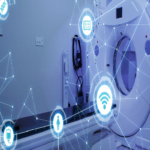How Healthcare IT Is Helping With Coronavirus (COVID-19)
As we’re all seeing, the coronavirus pandemic is turning the world upside-down. While many industries like entertainment and restaurants are decimated, other industries are stepping up to provide critical services to help us through this time. Healthcare IT is on the forefront of supporting the clinicians who are taking huge risks while providing care. I am profoundly grateful to be working in healthcare IT right now to be a small part of solutions that are making a difference.
Video Visits – Telemedicine
Probably the biggest change we’ve seen in a very short time is the increased use of telemedicine to connect healthcare providers with patients who cannot, or should not visit clinical settings. Beyond the obvious benefit of keeping potentially infectious people isolated, video visits help healthcare staff to conserve personal protective equipment (PPE) like gloves, masks, and gowns. This applies to patients in hospital beds as well as those who may visit outpatient clinics. Hospital staff can leave electronic tablets in patient rooms so that they don’t need to go into the room (and gown up) for every single patient interaction.
For healthcare providers who use one of the major electronic health records (EHR) systems, setting up video visits hasn’t been too difficult. They need to get the cameras and microphones for doing the visits from a PC, or they need to install a smartphone app that integrates with their EHR. An example is Haiku, which is paired with Epic. They then need to work with their EHR vendor to purchase a number of licenses to allow however many concurrent connections that are needed.
As the pandemic developed, HHS relaxed requirements to temporarily allow healthcare providers to use commercial video-conferencing solutions such as WebEx and Zoom for video visits. However, this should in no way be a permanent solution because these technologies are not integrated within EHRs, and therefore are not a part of the legal medical record. For each of these video visits, the provider still needs to go into their EHR to document the encounter.
There are also a number of direct-to-consumer telemedicine platforms that have been around for awhile that have seen increased use since the pandemic. Examples are Amwell and Teledoc.
Leveraging Patient Portals
Patient portals such as MyChart from Epic and HealtheLife from Cerner have been around for a number of years now. With the coronavirus pandemic, providers are now making greater use of screening questions and other pre-registration features to better understand patients before they show up at clinics. Patients can opt to share their GPS location with a clinic so that the staff know when the patient has arrived. This can help clinicians to provide “just in time” care and in some cases prevent wasting of PPE for patients who no-show at the last minute.
Healthcare IT staff are also using EHR data to send messages to high-risk patient groups. For example, the corticosteroid class of medications can weaken the immune system. We can easily run reports to identify all patients who are on these meds, and can include other risk factors like age. That data is then used to send emails and secure messages to the affected patients.
Creating New Hospital Beds
As cases increase, hospitals are needing to set up new care locations, sometimes in unconventional places like tents in parking lots. Just because patients are being seen in temporary locations, they still need to be entered into a clinic site and a bed to provide the right documentation. That work is done by ADT (admission, discharge, & transfer) analysts.
Deconstructing Coronavirus Cases
It is likely that COVID-19 was in our communities before it was officially identified. EHR systems are uniquely positioned to go back in time to help us identify older possible cases that were not apparent at the time. For example, we can run reports in our systems that look for patients over the past year who presented with respiratory symptoms, but tested negative for the flu or other respiratory infections; and had traveled outside the country during the same time frame. Can you imagine trying to do that with medical records on paper?
Big Tech Assistance
A number of large technology providers have teamed up to form the COVID-19 Healthcare Coalition to collaborate on technology solutions to help with the crisis. The companies include Microsoft, Amazon Web Services, Salesforce, and almost all of the major EHR vendors. Among other projects, they are working on solutions toward a vaccine, data analysis to help predict the spread of the virus, and web-based resources.




































